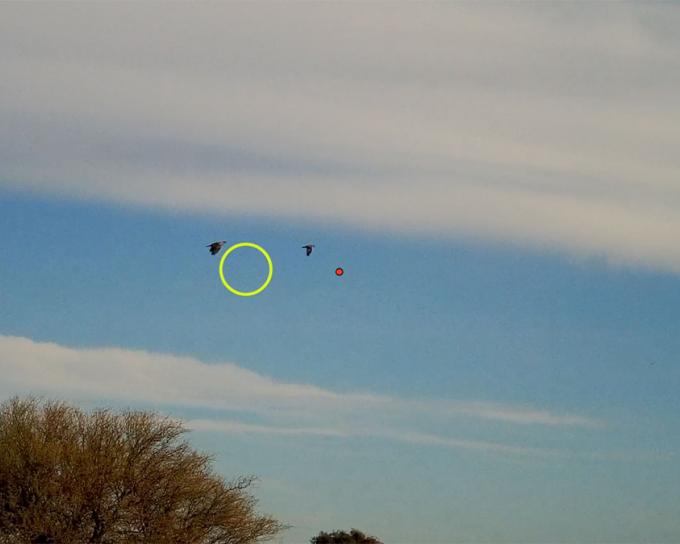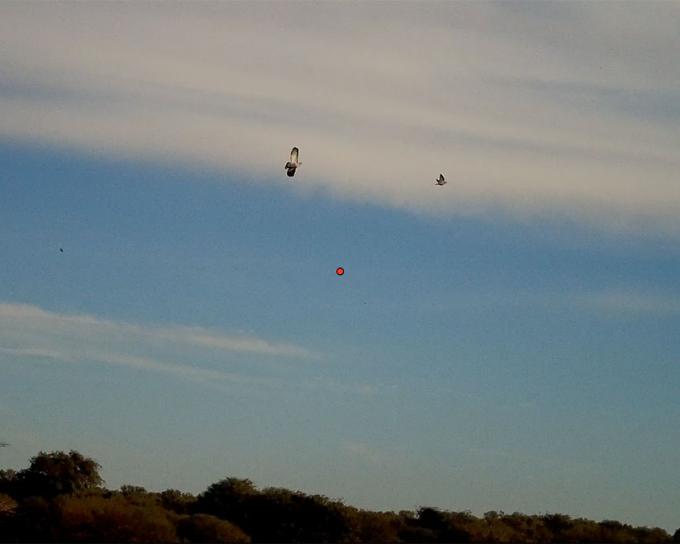Shotgun 101 – Being Able To Correct In The Field
Being able to correct in the field.
This year at convention we talked about reading the bird after you shoot to be able to know where you missed so you can self-correct in the field. Almost everyone was fascinated with the ShotKam video of misses and how obvious it was where the miss occurred, as they watched the bird flare a certain way.

On our last trip to Bolivia, Gil spent some time with the ShotKam missing pigeons in certain spots to see what the birds would do if the miss was under or over or in front or behind. In looking at the video one thing was blatantly obvious, if you were not moving the barrel in sync with the target long enough to know the speed is matched, self-correction is all but impossible. There are now almost 6,000 videos in our Knowledge Vault website on live birds, as well as trap, skeet and sporting clays. In every video except trap, the muzzle speed is matched to the bird’s speed. Matching speed is the one thing that must be a constant in every shot if you want to be able to replicate a hit or correct a miss.
Eight years ago, after reading the book “Peak” by Anders Erickson, we changed how we taught from getting shooters to hit the target to teaching shooters how to self-correct and how to predict where and how the shot is going to come together. The normal mantra of a wing or clay shooter is to chase the bird down with the barrel and try to fix the shot at the end by adjusting the lead and keeping the muzzle moving after the shot.
To say what this looks like to your brain would be confusing, and that would be the ultimate understatement. When attempting to fix it at the end, there is nothing consistent shot-to-shot-to-shot. Without a constant in every shot, self-correction is futile, if not totally impossible.
The more we have witnessed this evolution in wing and clay shooters across the country in our seminars and shooting clinics, the more we have grown to appreciate that being able to self-correct is essential in order to have anything that resembles a peak performance. The fact that without exception, every wing and clay shooter out there when asked if they would like to be more consistent will answer with a resounding “Yes,” but at the same time will smile, knowing they will not put in the work to achieve consistency in their shooting. It’s as if they are all looking for the easy button and we have a bit of news for all of you: There is no easy button.
On a trip to Greystone Castle a while back, we shot the first afternoon like we normally would, seeing the bird and mounting into the shot just under the bird and easing to the line in front and taking the shot with very consistent results. At dinner that evening, we got into a discussion with several of the other hunters about the mantra of the everyday wing-shooter and how their first reaction to hearing the flush was to mount the gun and while looking down the barrel, chase the bird down and try to fix the shot at the end. After talking about how confusing that was visually and how that contributed to the inconsistent results that they were all experiencing, Gil decided to mount first and then chase the birds down, just to see how it felt and what it really looked like.
For the next three hunts he did just that, but Vicki stuck with her technique of seeing the bird and mounting into the shot slightly under and then moving to the line of the bird and just ahead, going the same speed as the bird as she touched the shot off. Needless to say, Gil did not have a really good time mounting and chasing the quail and pheasants with the end of his barrel and it was evident the next evening in the bar.
What he did share was how confusing it was visually and how everything seemed to be happening at warp speed. Things as simple as keeping his balance were very difficult. The frustration of pulling the trigger and not hitting the bird was beginning to be obvious, but he was determined to do what we see the normal hunters do, just to experience it physically and mentally firsthand. Vicki was in charge of killing our share of the birds, so Gil remained steadfast in his approach of mounting first and chasing the birds down with the barrel and pulling the trigger.
After doing this for a full day and then on the morning hunt the next day, several things became really obvious. The first was that if the birds were going straight away and in straight lines, he could hit them, but not on a consistent basis. In fact, Gil commented that it was the exception when he would hit one, but the confusing thing was, the hits and the misses looked the same!
Another thing that was painfully obvious was the visual confusion created by his eyes bouncing back and forth between the barrel and the bird and how this made things speed up right at the end of the shot. Vicki was relaxed and just looked at the bird and mounted into the shot in slow motion just under the bird. As she was adjusting speed, she eased the muzzle just in front of the bird and produced one shot kills over and over again.
Something else that we discussed on the drive home was that Gil’s K-20 Parcour fit him perfectly with a custom stock, Briley chokes, Fiocchi #6s, Decot High-wide Shooting Glasses, great snake boots and fitted leather gloves, so everything that could be purchased was the best of the best. This clearly shows that successful wing shooting cannot be created by purchasing the best equipment money can buy. It is something that must be practiced and repeated over and over and it is more about technique and repetition than the name on the gun.
On the way home, Gil remarked about the tension in his shoulders, neck and back was horrible and that he was never going to go through that again, ever. Going through it did help us both better understand the frustration experienced by the everyday hunter who is taking a rifle approach to wing-shooting by looking down the barrel and chasing the bird. It also reinforced the conclusion that the two most important things in clay and wing shooting is the sight picture of seeing the bird behind where the barrel is pointed and matching gun speed to bird’s speed. The rest of it is really insignificant.
After sharing this with the people in our seminars, who by their admission were still trying to take the shot as they finished the mount, began to make all the sense in the world as they watched the video of the missed pigeons. Being with the bird for long enough to match muzzle speed with bird’s speed allows for the shooter to actually correct misses, both in the field and especially on the clays range. After only sharing four or five videos, the audience began to call the miss correctly just by watching what the bird did after the shot! All in our audiences were amazed at what they had learned and how valuable being with the bird longer and matching speed really did allow for them to self-correct.
It was then that Brian stood up and began to talk about our new Shotgunning 101 program that he has put together in the Knowledge Vault and how important it was that shooters, if they want to be able to self-correct, do the three bullet drill and the flashlight drill.
Brian explained to the crowd that if you want to be successful with a shotgun, everything you do with the gun must become as natural as holding your breath when you swallow. He even gave out three bottles of water and had three people take a swallow and they were all amazed at how they did actually hold their breath when they swallowed but they had done it so much they were not even aware they were doing it.
What an absolutely brilliant observation and an even more brilliant way to demonstrate that everything you do with the gun must be repeated enough times correctly, so you don’t have to think about it while you are doing it. Brian added one of his famous quotes from the 101 program that is being repeated nationwide: “If You Are Thinking, You Are STINKING!” It really is amazing to all three of us how quickly shooters begin to self-correct when learning the OSP System of shooting and it can be equally applied to clays as well as live birds and on running game as well.–Gil & Vicki Ash


